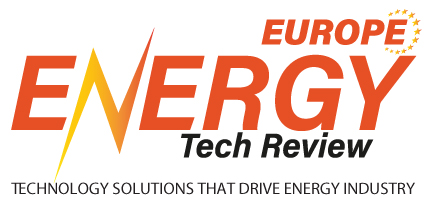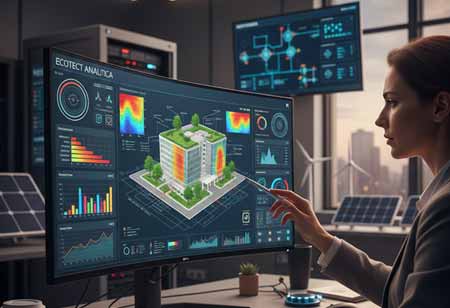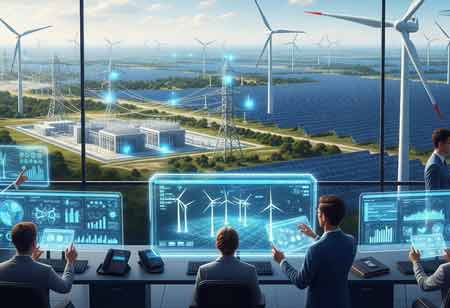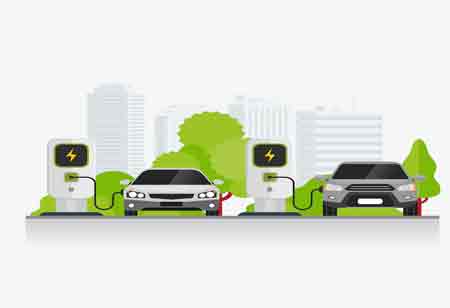CLOSE
Specials
I agree We use cookies on this website to enhance your user experience. By clicking any link on this page you are giving your consent for us to set cookies. More info
Be first to read the latest tech news, Industry Leader's Insights, and CIO interviews of medium and large enterprises exclusively from Energy Tech Review
Thank you for Subscribing
AI-Powered Innovation Management: Accelerating Breakthroughs in Grid Modernization and Clean Energy
The global energy transition requires modernized grids and the integration of clean energy, with AI enhancing efficiency, optimizing renewable energy projects, and enabling smart grid operations for a sustainable future.

By
Energy Tech Review | Tuesday, November 11, 2025
Stay ahead of the industry with exclusive feature stories on the top companies, expert insights and the latest news delivered straight to your inbox. Subscribe today.
Fremont, CA: The global energy transition is one of the most complex engineering and logistical challenges of the 21st century. At the heart of this transformation lies the need to modernize aging electrical grids and seamlessly integrate variable, clean energy sources such as solar and wind. Artificial Intelligence (AI), particularly in innovation management, is emerging as a critical accelerator, driving unprecedented efficiency, reliability, and speed in achieving these breakthroughs.
AI’s Role in Discovery and Design
Beyond materials innovation, AI also optimizes the design and siting of renewable energy projects such as wind farms and solar parks. By integrating geospatial data, climate models, and historical performance records, AI-powered platforms identify locations that maximize energy yield while minimizing environmental and financial risks. This level of intelligent optimization helps project developers balance variables like weather conditions, land use, environmental impact, and grid connectivity. As a result, AI ensures that renewable energy systems are designed for maximum efficiency, sustainability, and long-term performance, effectively redefining the boundaries of what is possible in clean energy development.
AI for Real-Time Intelligence
As the global energy ecosystem shifts from a centralized, one-way system to a decentralized, bidirectional network, AI has become the essential operating layer of the modern “Smart Grid.” This transformation is driven by the increasing integration of distributed energy resources (DERs) such as rooftop solar, electric vehicles, and community microgrids. AI enables the grid to operate with real-time intelligence—balancing supply and demand dynamically, optimizing power flows, and maintaining stability despite the intermittent nature of renewable generation. Through advanced forecasting, AI analyzes real-time sensor inputs, weather data, and consumption patterns to deliver highly accurate predictions of both energy generation and demand. These predictive insights empower grid operators to make proactive adjustments, reduce reliance on fossil-fuel peaker plants, and ensure reliable energy delivery even under fluctuating conditions.
AI also underpins advanced distribution management by continuously monitoring grid performance and autonomously controlling energy dispatch. It can direct power where it is needed most, regulate demand response programs, and coordinate the operation of storage systems—charging batteries during surplus renewable production and discharging them during peak demand to stabilize voltage and frequency. Furthermore, AI transforms maintenance from a reactive, time-based practice into a proactive, predictive process. By analyzing sensor data from turbines, transformers, and transmission lines, AI detects early signs of equipment wear or failure, allowing for timely maintenance that minimizes downtime and extends asset lifespan.
AI further strengthens decentralization and enhances market fluidity. It optimizes energy storage strategies based on forecasted prices and grid conditions, unlocking new value streams for both utilities and consumers. AI-driven peer-to-peer (P2P) energy trading platforms enable consumers who generate excess renewable power to sell it directly within their communities, with transactions securely managed through blockchain-enabled systems that ensure transparency and fair pricing. As digitalization deepens across the energy sector, AI also plays a critical role in safeguarding infrastructure against cyber threats. Intelligent cybersecurity systems continuously monitor network activity, identify anomalies, and isolate vulnerabilities in real time, ensuring that as the grid becomes smarter, it also becomes more resilient. In essence, AI is not just a tool for managing complexity—it is the strategic foundation upon which the intelligent, decentralized, and secure energy systems of the future are being built.
AI-powered innovation management is not just an incremental upgrade; it is a paradigmatic shift in how we design, operate, and maintain energy systems. By providing unprecedented predictive capabilities, real-time optimization, and a platform for rapid R&D, AI is the driving force that will turn the vision of a resilient, modern, and zero-carbon energy grid into reality—accelerating the breakthroughs necessary for a sustainable future.

Copyright © 2025 Energy Tech Review. All rights reserved






